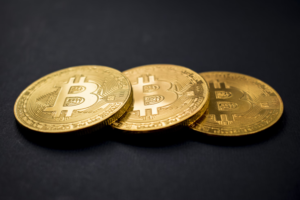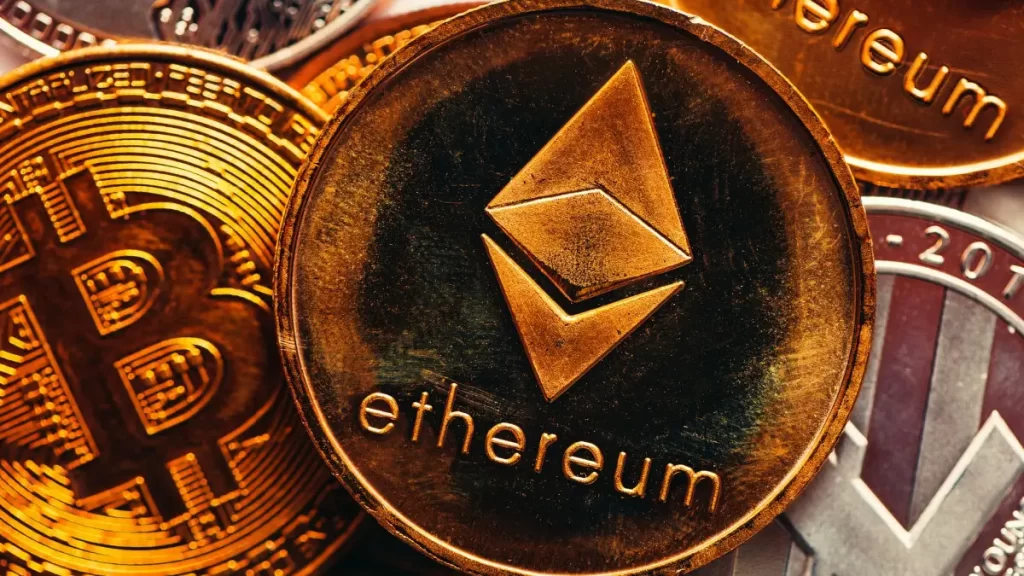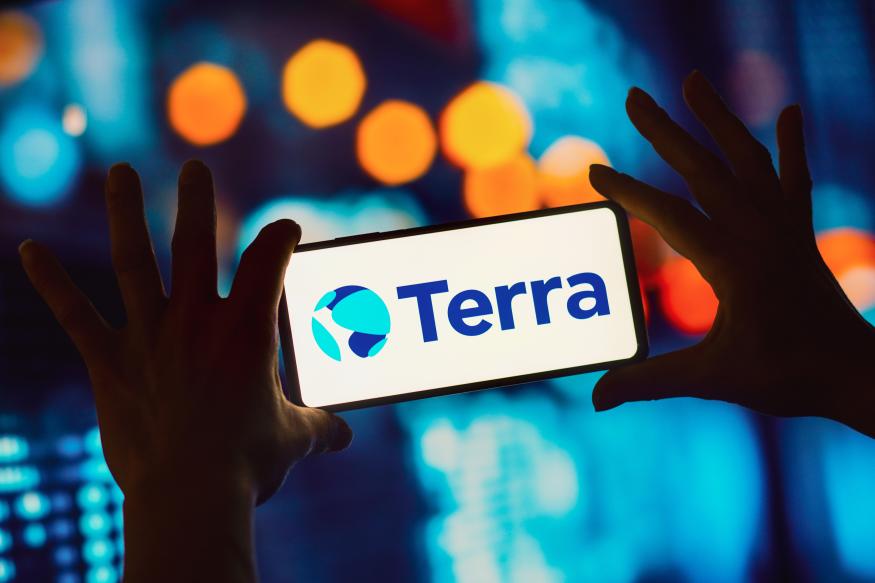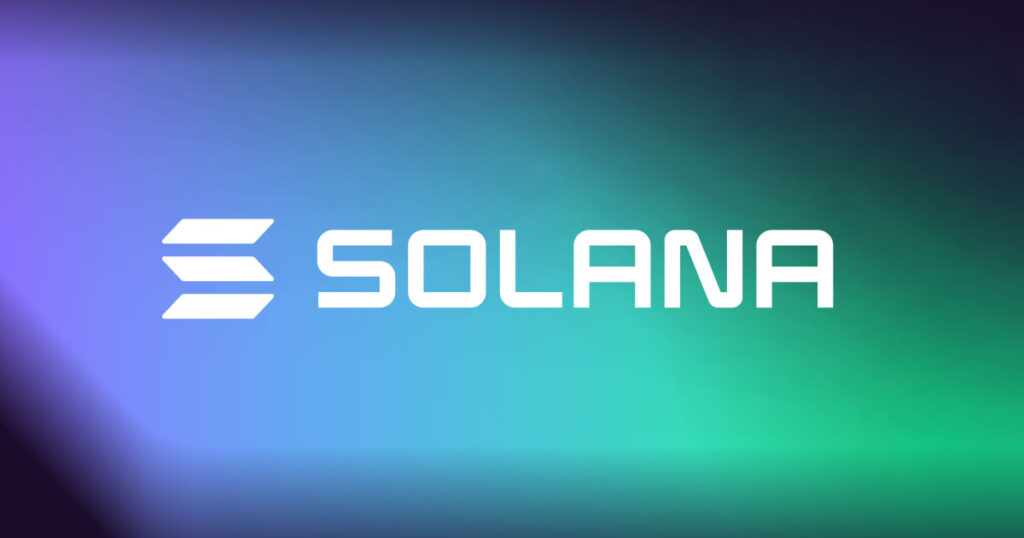The trustee overseeing the recovery of the hacked cryptocurrency exchange, Mt. Gox, has taken significant steps toward repaying creditors in Bitcoin (BTC) and Bitcoin Cash (BCH).
Recent reports indicate that Mt. Gox creditors have been contacted to confirm their identities and the existence of their exchange accounts, a crucial step in the reimbursement process.
Numerous Mt. Gox creditors have received emails from the trustee, notifying them of the successful completion of identity verification for their crypto exchange accounts.
These accounts will be utilized to facilitate the repayment of BTC and BCH. In a notification posted on Mt. Gox’s insolvency hub on Reddit on January 22nd, it was revealed that a crypto exchange mentioned in a user’s rehabilitation claim had confirmed the ownership of the account with the trustee.
Consequently, the exchange is now poised to accept the user’s subscription to the agency receipt for receiving repayment in BTC or BCH.
However, the email also issued a cautionary note, stating that users might face difficulties in receiving repayment if their accounts are disabled or frozen in the future.
Numerous Reddit users have confirmed receipt of such emails from the Mt. Gox trustee, with the majority of confirmations originating from the Bitstamp exchange.
Some Kraken users also reported receiving confirmation emails, while others have not yet received any communication from the trustee.
Interestingly, certain exchanges involved in the repayment process have informed their users that they will continue serving Mt. Gox-related customers in specific countries, despite their withdrawal from those jurisdictions.
Bitstamp, for instance, which ceased operations in Canada on January 4, 2024, announced that it would continue servicing local accounts engaged in the Mt. Gox settlement.
However, these accounts will have limited functionality, restricted to withdrawals only, with deposits and trading no longer available.
These developments coincide with the trustee’s progress in facilitating bank account repayments. Reports of the first Mt. Gox repayments surfaced in late December 2023, and some creditors even received double payments during this phase.
Founded in 2010, Mt. Gox was once the world’s largest Bitcoin exchange, handling approximately 70% of all BTC transactions.
However, it suffered a massive security breach in 2014, resulting in the loss of 850,000 BTC and making it one of the largest crypto bankruptcies in history.
Mt. Gox is now on track to repay its creditors a total of 142,000 Bitcoin and 143,000 Bitcoin Cash, along with 69 billion Japanese yen (approximately $510 million) by October 2024.
The fee war in the Bitcoin exchange-traded fund (ETF) arena has now crossed the Atlantic to Europe. This development follows the recent approval by the United States Securities and Exchange Commission (SEC) of Bitcoin ETFs in the United States, marking a significant shift in the financial landscape.
In the lead-up to the SEC’s approval on January 10th, many applicants in the U.S. continually adjusted their S-1 filings to reduce their ETF fees. Now, a similar trend is emerging in Europe among listed exchange-traded products (ETPs).
Two prominent asset management firms, Invesco and WisdomTree, have taken a bold step by slashing fees on their European-listed ETPs by over 60%.
Invesco’s $137 million Physical Bitcoin ETP will see its fee drop from 0.99% to a mere 0.39%, while WisdomTree’s $325 million Physical Bitcoin ETP will see its cost decrease from 0.95% to 0.35%.
It’s worth noting that in Europe, digital asset exchange-traded products are structured as exchange-traded notes (ETNs), a distinction from funds.
ETN investors hold debt securities, while ETF shareholders have a stake in the fund’s underlying assets.
READ MORE: Terraform Labs, Behind Defunct TerraUSD, Files for Bankruptcy Amid Ongoing Legal Battle
The significant fee reductions can be attributed to increased competition and the proliferation of multiple ETFs in the U.S., a leading global financial market.
Previously, U.S.-based investors had to look to Canadian and European-based ETPs for investment opportunities.
However, with the SEC’s green light for 11 spot Bitcoin ETFs in the U.S., the demand for European ETPs from U.S. investors has markedly diminished.
Gary Buxton, Invesco’s Head of ETFs for Europe, explained in an interview with the Financial Times that the multitude of ETFs in the U.S. adjusted their fees to establish a “new equilibrium between supply and demand.” This led to considerably lower prices compared to existing ETPs in Europe.
U.S.-based Bitcoin ETFs have an advantage over their European counterparts in terms of liquidity and accessibility.
They are available on a single exchange platform, making them more convenient for European investors.
The recently launched spot Bitcoin ETFs in the U.S. have witnessed massive trading volumes from day one and continue to trade billions of dollars in daily volume, further strengthening their appeal to investors on both sides of the Atlantic.
This fee war signals a shifting landscape in the world of digital asset investment, with investors benefiting from reduced costs and increased options as competition heats up in both the U.S. and Europe.
The Ethereum ecosystem is making significant strides toward reducing gas fees and enhancing transaction speeds for layer-2 rollups with the introduction of the Dencun upgrade on the network’s testnets in early 2024.
The Dencun network upgrade was activated on the Goerli testnet on January 17, bringing forth several Ethereum Improvement Proposals (EIPs).
Among these, EIP-4844 is particularly noteworthy, as it enables proto-danksharding, a highly anticipated improvement aimed at lowering L2 transaction fees.
However, the deployment of Dencun to Goerli initially encountered a four-hour delay due to a bug in Ethereum’s proof-of-stake client, Prysm.
Nebojsa Urosevic, co-founder of Ethereum development platform Tenderly, explained that network synchronization delays are common but also serve as an essential part of identifying and resolving such bugs.
The bug, as revealed by Ethereum Foundation protocol lead Tim Beiko, was linked to Prysm incorrectly setting the historical roots value to 0, preventing the Goerli testnet from finalizing the Dencun upgrade.
Dencun incorporates nine different EIPs, with proto-danksharding and blob transactions being the most eagerly anticipated.
Proto-danksharding offers improved scalability through the use of blob-carrying transactions, which are more efficient and cost-effective than traditional calldata, potentially reducing costs by 80%–90%.
Following its successful implementation on Goerli, the Sepolia and Holesky testnets are next in line to undergo the Dencun upgrade.
All three testnets must demonstrate successful deployment before considering an upgrade to Ethereum’s mainnet.
READ MORE: US Rep. Tom Emmer and Former President Trump Unite in Opposition to CBDCs
One of the significant impacts of the Dencun upgrade is storage efficiency. Ethereum sidechain Gnosis’ infrastructure director, Philippe Schommers, explained that Dencun will offer more block space and lower costs to layer-2 solutions.
Data previously stored indefinitely on-chain will now be discarded after two weeks, improving efficiency and reducing costs.
As a result, Dencun promises lower gas fees and faster transactions, paving the way for more complex applications on layer-2 solutions.
Rollups, in particular, stand to benefit greatly from reduced operational costs and improved scalability.
Anurag Arjun, co-founder of data availability blockchain Avail, highlighted the growing demand for block space from rollups and suggested that protocols like Avail could help address these demands.
Recent benchmarks of Avail’s zero-knowledge Ethereum Virtual Machine Validium have demonstrated a 90% reduction in transaction fees while providing decentralized and secure data availability guarantees.
In summary, the Dencun upgrade marks a significant step toward addressing scalability issues on the Ethereum mainnet, offering greater storage efficiency, lower gas fees, and an improved development experience.
Rollups and complementary protocols are set to play a crucial role in further enhancing Ethereum’s ecosystem.
Coinbase’s Chief Legal Officer, Paul Grewal, has criticized the United States Government Accountability Office (GAO) for its recent report on cryptocurrency use in evading sanctions.
In a post on X (formerly Twitter) on January 22, Grewal expressed his disapproval, accusing the GAO of failing to conduct a meaningful comparative analysis and instead targeting an industry that invests heavily in complying with the law.
He pointed out that buried within the report were admissions that digital assets are not an effective way to circumvent sanctions.
The GAO report in question was released on December 13, 2023, and the federal response was published on January 16.
The report claimed that some foreign states facing U.S. sanctions had utilized cryptocurrencies like Bitcoin to evade these sanctions.
However, it also acknowledged that digital assets have inherent limitations, such as their decentralized nature and public ledger, which can be used by U.S. agencies and analytics firms to trace transactions and identify illicit actors.
Furthermore, the report conceded that the use of digital assets for payments is limited, and implementing global standards could enhance compliance with Anti-Money Laundering (AML) regulations.
READ MORE: Bitcoin ETFs: Game Changer or Threat to Crypto’s Core Principles?
Despite these findings, Senator Elizabeth Warren seized upon the report to voice concerns about the crypto industry and push for stricter AML regulations.
Critics were quick to point out that the report only cited one instance of cryptocurrency use to evade sanctions, involving a Chinese party.
Moreover, major regulatory bodies and policymakers worldwide have been implementing frameworks to align cryptocurrency with AML guidelines, including the Markets in Crypto-Assets Regulation in Europe and similar regulations in Asian countries like Hong Kong, Japan, and Singapore.
A crucial point often overlooked is that the proportion of cryptocurrency used for illicit activities is less than 1% of the total circulating supply, significantly lower than that of fiat currencies like the U.S. dollar.
Instances of stolen or hacked crypto funds taking years to move due to the public ledger system are rare, and crypto exchanges often identify and block them.
In contrast, the United States has yet to finalize its crypto regulations, despite persistent calls from policymakers.
Nevertheless, specific regulatory policies are already in place to govern crypto service providers, helping to maintain compliance and prevent illicit activities within the industry.
The popular dog-themed meme cryptocurrency, Dogecoin (DOGE), experienced a surge in its value this past week, reaching its highest point in seven days, amidst the unveiling of the new “XPayments” account on X, formerly known as Twitter.
This new account quickly amassed over 100,000 followers, creating a buzz in the cryptocurrency community.
Between the late hours of January 20 and the early hours of January 21, DOGE recorded a remarkable 12.8% increase in its value, hitting a weekly high of $0.08978, according to data from Cointelegraph Markets Pro.
However, in the subsequent 24 hours, its value retraced by approximately 4%, and it is currently trading at $0.08330.
The XPayments account, while yet to make any posts, has sparked speculation among traders regarding its potential payment functions.
Given X’s owner, Elon Musk’s, occasional references to DOGE, traders believe that the cryptocurrency might play a role in the platform’s future offerings.
READ MORE: US Rep. Tom Emmer and Former President Trump Unite in Opposition to CBDCs
Musk has previously incorporated DOGE into his ventures, allowing DOGE payments for Tesla’s merchandise and even temporarily changing Twitter’s logo to Dogecoin’s logo, resulting in a 22% surge in DOGE’s price when he assumed control of Twitter in April 2023.
In a further development, Musk hinted that payments on X would be launched sometime around mid-2024. In preparation for this, in 2023, Musk’s company applied for money transmitter licenses in various United States jurisdictions.
This move signifies Musk’s ongoing interest in the integration of cryptocurrency into mainstream platforms, which has been a driving force behind the fluctuating fortunes of DOGE.
The recent surge in DOGE’s value highlights the ongoing influence of key figures like Elon Musk and the impact of cryptocurrency integration into popular platforms.
As the crypto community eagerly awaits further details about XPayments and its potential adoption of DOGE, the cryptocurrency market remains dynamic and ever-responsive to external developments.
With Musk’s track record of sparking enthusiasm for DOGE, the crypto world will be closely monitoring any future announcements and developments related to this intriguing partnership between Dogecoin and X.
A Colorado-based online pastor, Eli Regalado, who stands accused of fraud for promoting a seemingly worthless cryptocurrency, has confessed to the charges, attributing his actions to a divine directive.
In a rather peculiar nine-minute video shared on the official INDXcoin website, Regalado, the founder and spiritual leader of INDXcoin, acknowledged the veracity of the accusations against him and his partner, Kaitlin Regalado.
He candidly admitted, “The charges are that Kaitlin and I pocketed $1.3 million dollars, and I just want to come out and say those charges are true.”
On January 18, the Regalados faced charges of fraud, stemming from their involvement in creating and promoting a fraudulent digital token named INDXcoin, as revealed by the Colorado Securities Commission.
Colorado Securities Commissioner Tung Chan expressed, “We allege that Mr. Regalado took advantage of the trust and faith of his own Christian community and that he peddled outlandish promises of wealth to them when he sold them essentially worthless cryptocurrencies.”
Regalado targeted Christian communities in Denver, asserting that divine revelation had assured him that INDXcoin investments would lead to prosperity.
READ MORE: Bitcoin ETFs: Game Changer or Threat to Crypto’s Core Principles?
Between June 2022 and April 2023, INDXcoin purportedly raised close to $3.2 million from over 300 investors via a platform known as the Kingdom Wealth Exchange, with a significant portion of funds originating from the online-only Victorious Grace Church, where Regalado serves as pastor.
Regalado disclosed that a portion of the raised capital went towards taxes, while a substantial amount was allocated for divine-guided home renovations.
The Kingdom Wealth Exchange ceased operations on November 1, 2023, with Regalado citing financial constraints, asserting that he and Kaitlin were facing financial hardship.
Simultaneously, he conveyed a message from God to INDXcoin holders, urging them not to sell the token and to break free from the pursuit of material wealth.
Despite their admission of impending financial struggle, the lawsuit filed against the Regalados alleges that they lavishly spent the majority of the $1.3 million, indulging in cosmetic dentistry, luxury handbags, snowmobiles, home improvements, and extravagant vacations.
Cointelegraph reached out to Regalado for comment but received no immediate response.
Terraform Labs, the entity responsible for the now-defunct TerraUSD (UST) stablecoin, has initiated bankruptcy proceedings in the United States.
The company filed for Chapter 11 bankruptcy protection at the United States Bankruptcy Court for the District of Delaware, indicating estimated liabilities and assets ranging from $100 million to $500 million, as per a January 21 filing.
In a separate statement, Chris Amani, the CEO of Terraform Labs, stated, “The Terra community and ecosystem have shown unprecedented resilience in the face of adversity, and this action is necessary to allow us to continue working toward our collective goals while resolving the legal challenges that remain outstanding.
We have overcome significant challenges before and, against long odds, the ecosystem survived and even grew in new ways post-depeg; we look forward to the successful resolution of the outstanding legal proceedings.”
According to the bankruptcy filing, the defunct company’s liabilities and assets both fall within the range of $100 million to $500 million.
READ MORE: Bitcoin ETFs: Game Changer or Threat to Crypto’s Core Principles?
This development comes just four days after the U.S. Securities and Exchange Commission (SEC) granted a postponement of Kwon’s upcoming fraud trial until March 25 in response to a request from his legal team.
The Terra ecosystem, overseen by Kwon, experienced a collapse in May 2022.
Following the firm’s implosion, the whereabouts of its co-founder remained unknown until he was apprehended in Montenegro in March 2023 for attempting to use forged travel documents to leave the country.
The SEC initially filed civil charges against Terraform Labs and Kwon in February 2023, accusing both parties of orchestrating a “multi-billion dollar crypto asset securities fraud” linked to the tokens previously known as UST and Terra (LUNA).
The United States and South Korea are both seeking Kwon’s extradition, sparking speculation that he could face multiple sentences in both nations.
Should Kwon be extradited to South Korea, he might potentially confront a 40-year imprisonment sentence in the country where the majority of his alleged crimes were committed.
Solana’s native token, SOL, faced a 9% decline on January 18, dropping to a low of $91.40.
This marked the continuation of a trend where SOL struggled to breach the $100 level for the past 15 days.
However, this setback shouldn’t cause excessive concern, given the overall cryptocurrency market’s inability to maintain levels above $1.6 trillion throughout 2024.
Despite this recent dip, SOL boasted an impressive 84% gain in December, although investors are beginning to express concerns about the lack of sustained positive price momentum.
The December 2023 rally of SOL was driven by FOMO (fear of missing out), triggered by the surge in Solana SPL token airdrops, including Jito (JTO), BONK, and Dogwifhat (WIF).
This phenomenon led to increased demand for the Solana Saga Phone as some projects offered exclusive benefits to these users.
However, the tide has turned recently, with BONK experiencing a 15% correction between January 17 and 18, and JTO declining by 19% during the same period.
Another contributing factor to SOL’s correction was the excessive optimism surrounding airdrop expectations.
Some launches were delayed, and others provided only temporary boosts to its decentralized applications (DApps), fizzling out after the airdrop snapshots.
Analysts and influencers created lists of promising opportunities, but few tokens reached substantial valuations and trading volumes.
Optimism regarding SOL’s token performance is partly fueled by the growth of deposits within the Solana Network’s decentralized finance (DeFi) sector.
The Total Value Locked (TVL) in SOL tokens peaked at 15.4 million on December 19, 2023, marking a 60% increase compared to the previous month.
Although it has stabilized around 14 million, growth has been notable in Jito and Marinade Finance liquid staking solutions, as well as Kamino, Orca, and Solend DeFi applications, which have all surpassed $150 million in deposits.
Despite its recent decline in transactions and active DApps users, Solana’s network activity has been on the rise in terms of overall transactions and volumes, albeit still trailing competitors like BNB Smart Chain and Polygon.
READ MORE: Spot Bitcoin ETFs See Robust Growth with 10,667 BTC Accumulated in 5 Days
Solana did witness an 8.5% decline in transactions over the last seven days. However, it leads in the absolute number of transactions at 72.3 million, partially due to its lower costs.
Solana’s unique architecture, which relies on heavy-processing validation, has attracted criticism but also provided opportunities for DApps requiring extensive bandwidth, including token launches, NFT collections, games, and social networks.
Notably, Solana became the third-largest network in NFT marketplace volumes, with NFT transactions reaching $270.5 million, trailing Ethereum by just 20%.
The current state of Solana’s network activity doesn’t indicate an imminent sharp price correction for SOL, thanks to its resilience in terms of DApps volumes and TVL.
However, there is downward pressure on SOL’s demand due to excessive expectations related to airdrops and SPL token performance.
SOL’s market capitalization currently stands at $40.6 billion, with a price of $94, still 50% lower than its peak in November 2021.
There is potential for an upside if the network continues to attract interest from projects that value its stability amid high network processing demand, especially as many competitors grapple with surging transaction fees or prolonged instability.
Bitcoin approached the $42,000 mark as the week closed on January 21, but it was far from a stellar week for the cryptocurrency bulls.
Data from Cointelegraph Markets Pro and TradingView indicated that Bitcoin’s price managed to stabilize above the $41,000 level during the weekend, although it had dipped to $40,270 on Bitstamp earlier in the week, marking its lowest point since December 11.
The cryptocurrency landscape seemed less optimistic for those hoping for new all-time highs, as market participants anxiously awaited the weekly close and the resumption of Wall Street trading.
Popular trader and analyst Rekt Capital warned that Bitcoin had dropped below the Weekly Range Low after encountering new resistance, and a weekly close below this level could initiate a bearish trend.
Crypto Tony, another trader, expressed the possibility of Bitcoin dropping below $40,000, possibly before the block subsidy halving scheduled for April.
Additionally, Joe McCann, founder of the crypto fund Asymmetric, highlighted the dwindling trading volume in Bitcoin since the launch of exchange-traded funds (ETFs), which had been anticipated.
The spotlight remained on the United States’ spot Bitcoin ETFs, which had grown their assets under management to nearly $4 billion since their introduction on January 11.
READ MORE: Sam Altman’s Ambitious Plans to Establish Global Semiconductor Manufacturing Facilities
These ETFs helped mitigate the impact of selling from the Grayscale Bitcoin Trust (GBTC), which had recently transitioned into an ETF. GBTC had experienced outflows due to high maintenance fees and investors seeking to cash out at par value, as previously GBTC shares had traded at a substantial discount compared to BTC/USD.
Trading firm QCP Capital noted that GBTC had witnessed outflows of $1.17 billion since its conversion into an ETF and emphasized the significance of monitoring these outflows moving forward.
The conversion into an ETF offered GBTC holders a long-awaited opportunity to exit at par value, but the extent of remaining outflows from GBTC’s current $25.4 billion assets under management remained uncertain.
Looking ahead, QCP Capital pointed out that the next major crypto events to watch were the Bitcoin halving in mid-April and the potential approval of Ethereum (ETH) spot ETFs starting in May.
Additionally, macroeconomic events were expected to influence the direction of the cryptocurrency market in the interim.
Elon Musk has vehemently refuted claims made in a report suggesting that his artificial intelligence (AI) firm, xAI, has already secured $500 million out of a targeted $1 billion investment from various stakeholders.
Musk took to X (formerly known as Twitter) to dismiss the accuracy of a Bloomberg article, firmly stating, “This is not accurate.”
Bloomberg, relying on undisclosed sources, reported that xAI is presently engaged in discussions that could potentially lead to a valuation between $15 billion and $20 billion, subject to potential adjustments in the coming weeks.
In the midst of these developments, Musk and prospective investors are said to be actively negotiating terms that may extend beyond the conventional equity shares in xAI, possibly including considerations related to computing power.
Notably, in November 2023, Elon Musk disclosed that equity investors in X, the entity he founded as an alternative to OpenAI due to philosophical disagreements, would be entitled to a 25% ownership stake in xAI.
This arrangement implies that these investors are encouraged to allocate at least 25% of their X investment into xAI, according to reports.
For instance, if an investor committed $10 billion to X, they would be encouraged to invest $2.5 billion or more in xAI, according to Bloomberg’s analysis.
READ MORE: SEC Acknowledges Nasdaq and Cboe Proposals for Bitcoin ETF Options Trading
xAI, founded by Musk in 2023, was introduced as a departure from OpenAI, and its chatbot, Grok, relies on social media content originating from X.
Adding to the intrigue, it was revealed that xAI had successfully secured a deal for a private sale totaling $865.3 million in unregistered equity securities.
This development came to light through a filing submitted to the United States Securities and Exchange Commission on December 5, 2023.
The filing, known as xAI Form D, stipulated that these securities would be offered exclusively to accredited investors, subject to resale restrictions under Rule 506(b).
Remarkably, $134.7 million worth of these securities had already been sold, with the initial sale taking place on November 29, 2023.
As the negotiations and discussions surrounding xAI’s financial future continue to unfold, it remains to be seen how Elon Musk’s vision for the company will align with the investment interests of prospective stakeholders.












